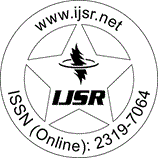Downloads: 3 | Views: 78 | Weekly Hits: ⮙2 | Monthly Hits: ⮙3
Analysis Study Research Paper | Wildlife Management | India | Volume 14 Issue 1, January 2025 | Popularity: 5.3 / 10
Foraging Behaviour of Nilgai, Boselaphus tragocamelus (Pallash, 1766) in Agro-Ecosystem of Washim District
Pallavi Kale, Sachin Tayade
Abstract: The Nilgai (Boselaphus tragocamelus) is a widely distributed ungulate species in the Indian subcontinent, known to inhabit agricultural landscapes and cause significant crop damage. This study aimed to investigate the foraging behaviour of the Nilgai in agro-ecosystems, with a focus on its herd size and foraging behaviour. We conducted a comprehensive field study in the agricultural landscapes of Washim district, using an observational method. Our results show that the Nilgai is a browser, with a diet consisting mainly of crops, including wheat, jowar, maize, pigeon pea, green gram, black gram, groundnuts and soybean. The species exhibits a strong preference for certain crop species, particularly those with high nutritional value. We also found that the Nilgai is a crepuscular and nocturnal forager, with peak activity periods during dawn and dusk. The species uses a variety of habitats, including agricultural fields, grasslands, and forest edges, with a strong preference for areas with dense vegetation and access to water.
Keywords: Blue bull, foraging behaviour, agro-ecosystem, vigilance, herd dynamics
Edition: Volume 14 Issue 1, January 2025
Pages: 865 - 868
DOI: https://www.doi.org/10.21275/SR25117123933
Make Sure to Disable the Pop-Up Blocker of Web Browser
